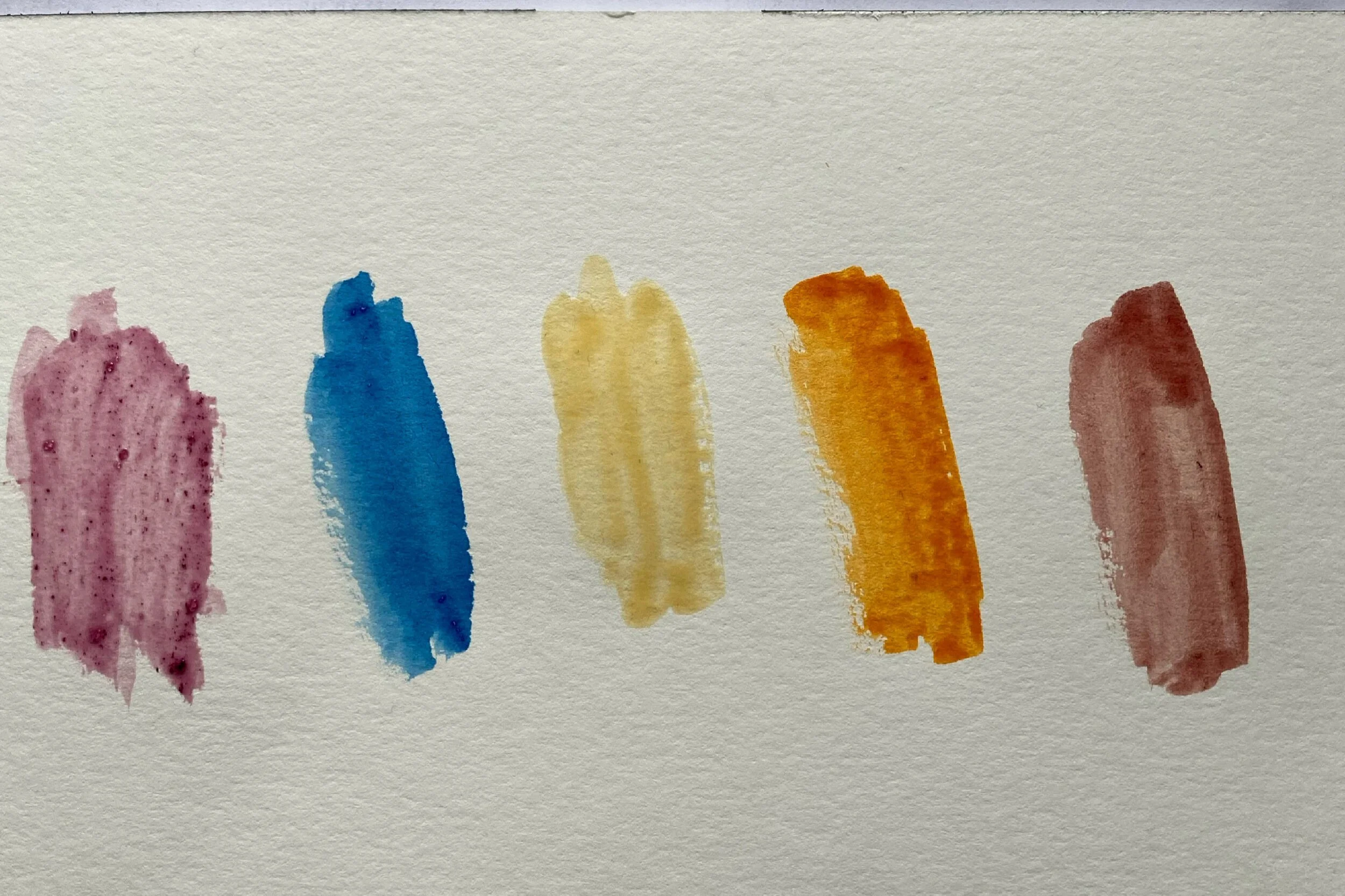
Rhodophyta Purple
Rhodophyta, or red algae, describes a diverse set of unicellular and multicellular algae, most of which are multicellular seaweeds living in marine waters. Rhodophyta are some of the oldest eukaryotes on the planet and have been used by humans as food like nori and carrageenan for centuries.
Like cyanobacteria, red algae have phycobilins as accessory pigments. These accessory pigments usually manifest as brilliant pinks and purples. Since most red algae are seaweed, I’ve been branching out to experiment with both macro and microspecies.
Mazzaelle Splendens - Red algae pigment and gouache on paper, 2021
Grow, Gather, & Observe
Porphyridium cruentum is one of the few red microalgae. Used primarily for cosmetics, porphyridium extracts into a brilliant violet purple. A slow-growing marine species, porphyridium has been a staple of my algae farm and is extremely hard to acquire outside of mass industrial buying. I am slowly growing this algae in the hopes I will someday have enough to extract the pigment.
Pigment extraction takes a lot of tissue and most red algae are multicellular, so I have turned to seaweed as a source. Several red algae species are native and prolific in the Pacific Northwest including Chondracanthus exasperatus (Turkish Towel), Odonthalia floccosa (Sea Brush), and Mazzaella splendens (Rainbow-leaf seaweed). All are gathered readily in the Salish Sea. I have experimented with Rainbow-leaf seaweed so far.

Porhpyridium at 400x magnification
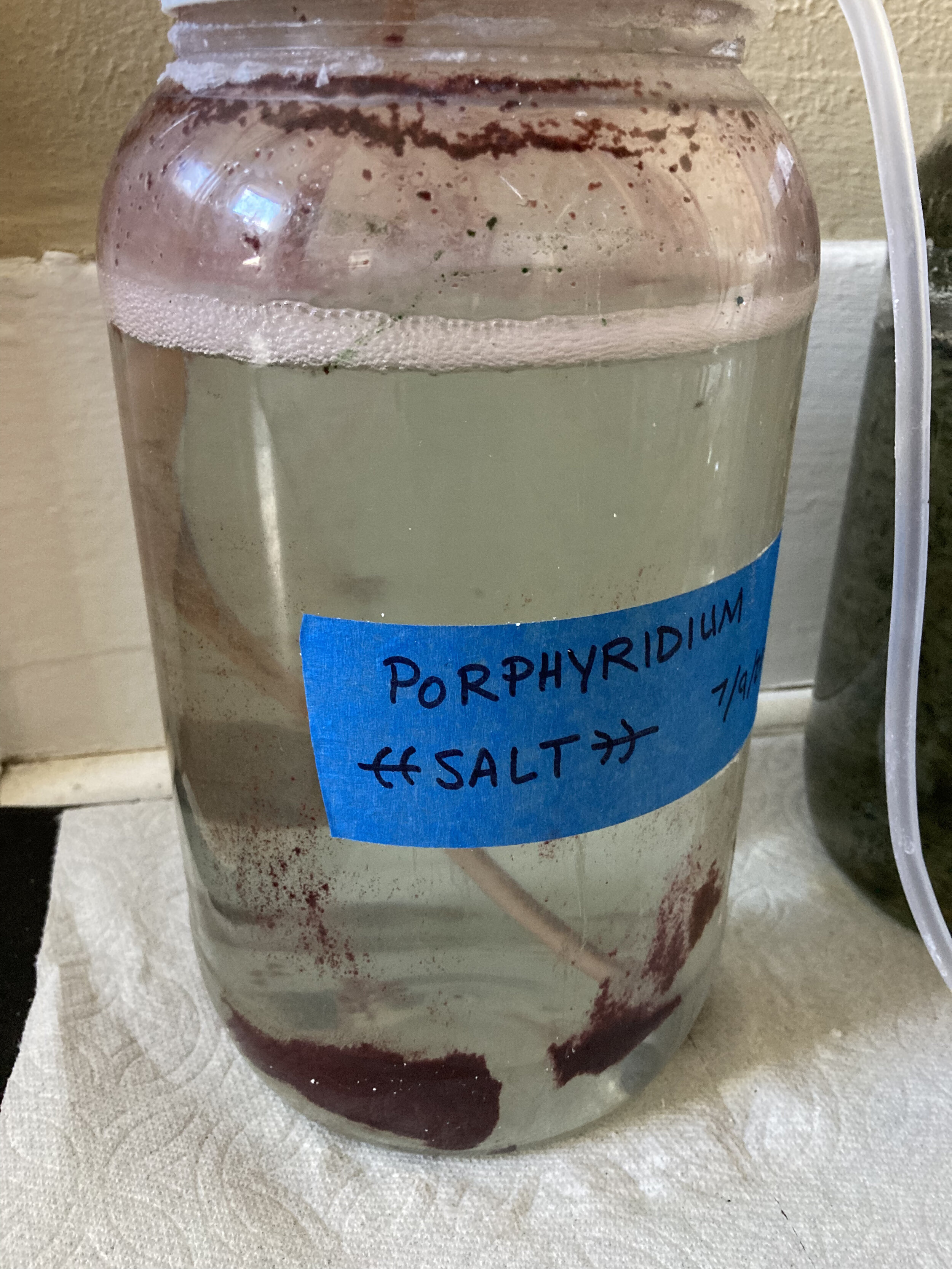
Porphyridium growing in my bioreactor
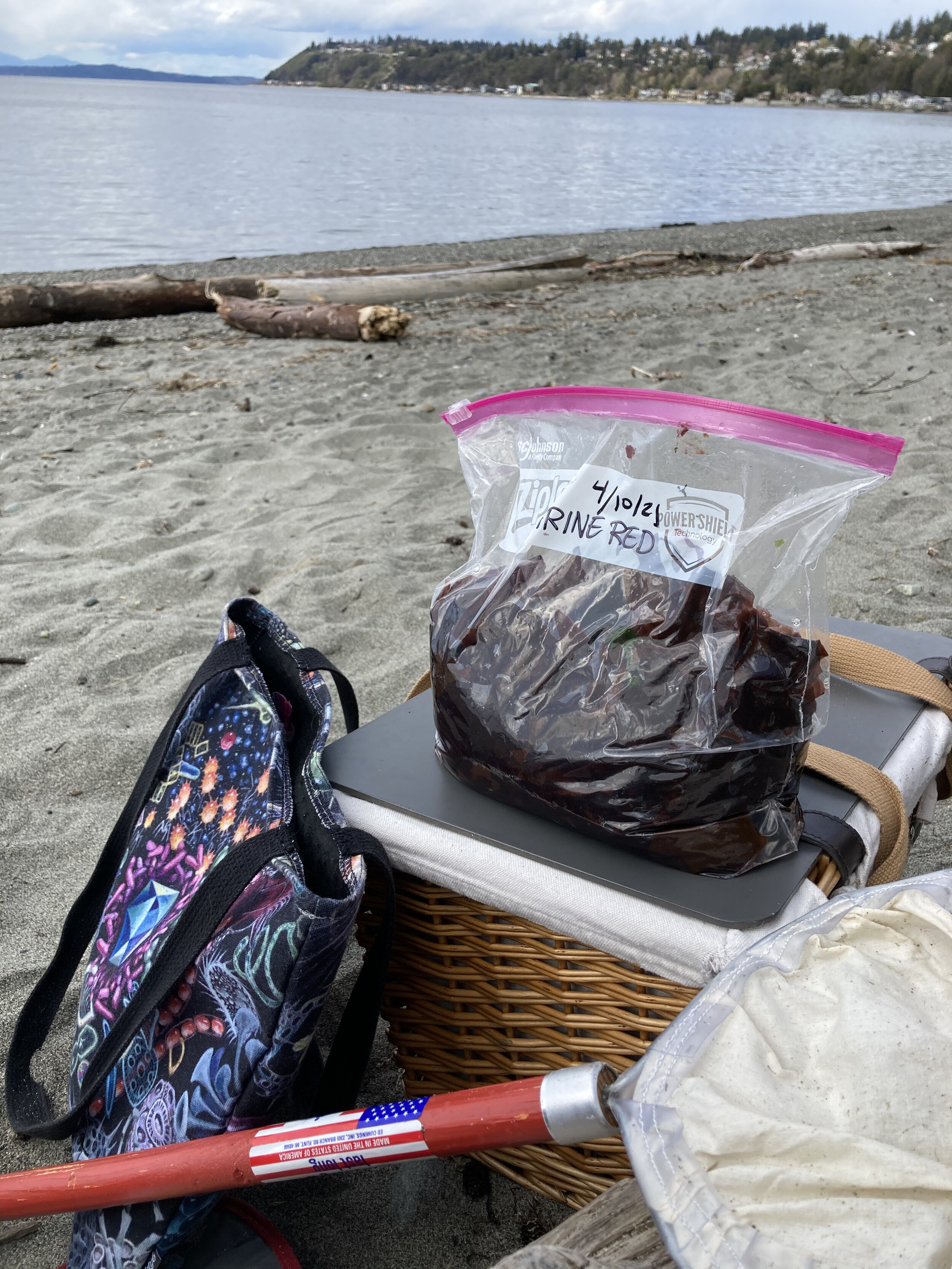
Mazzaella splendens harvest
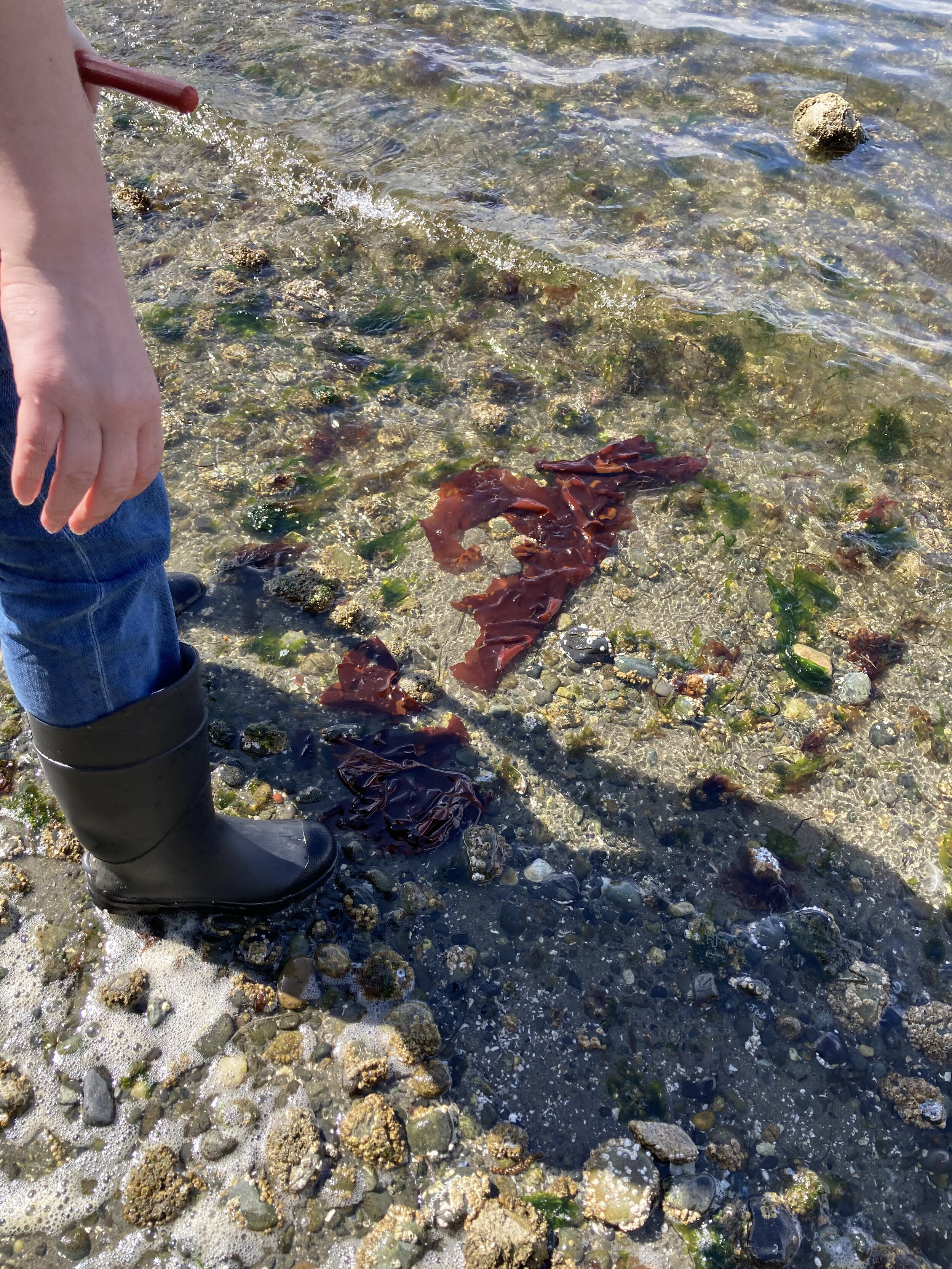
Extract Pigment
As mentioned above, porphyridium is very hard to acquire as a consumer both as a raw product and pigment. I have yet to grow enough microalgae to make a good extraction attempt, so I have focused on extracting from rainbow-leaf seaweed.
Seaweed cells are incredibly durable which makes them difficult to break down and extract. I put the seaweed into my freezer and did a 24-hour freeze-and-thaw cycle to help break down the cell structure. This worked very well and the pigment was readily seen in the freezer bag.
After blending in a home blender to break down the mixture into a slurry, I filtered the extract, then salted out the concentrate with ammonium sulfate to further isolate the pigment. The pigment slurry was then filtered over a long weekend to extract the purple.
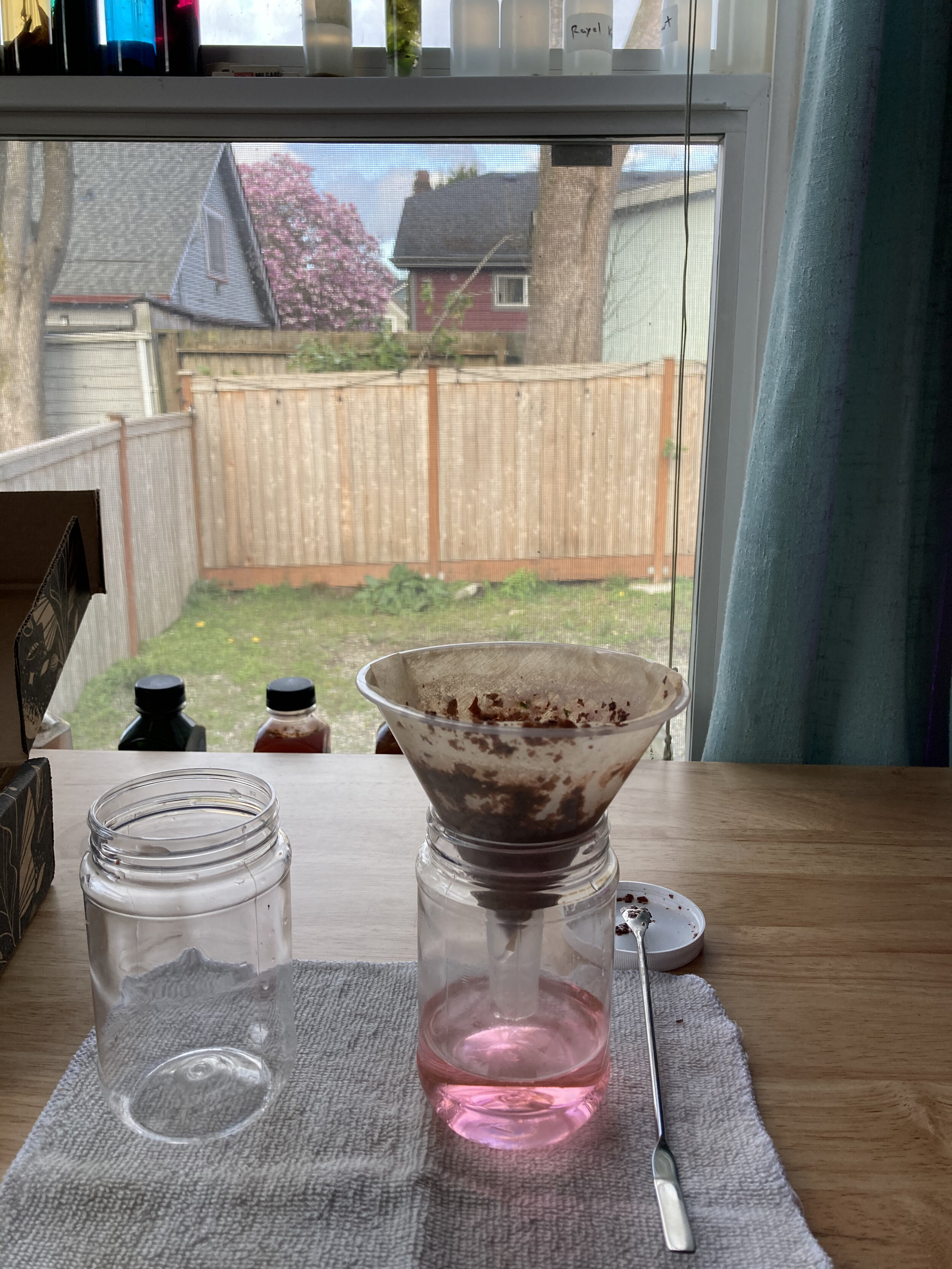
Filtering the blended seaweed
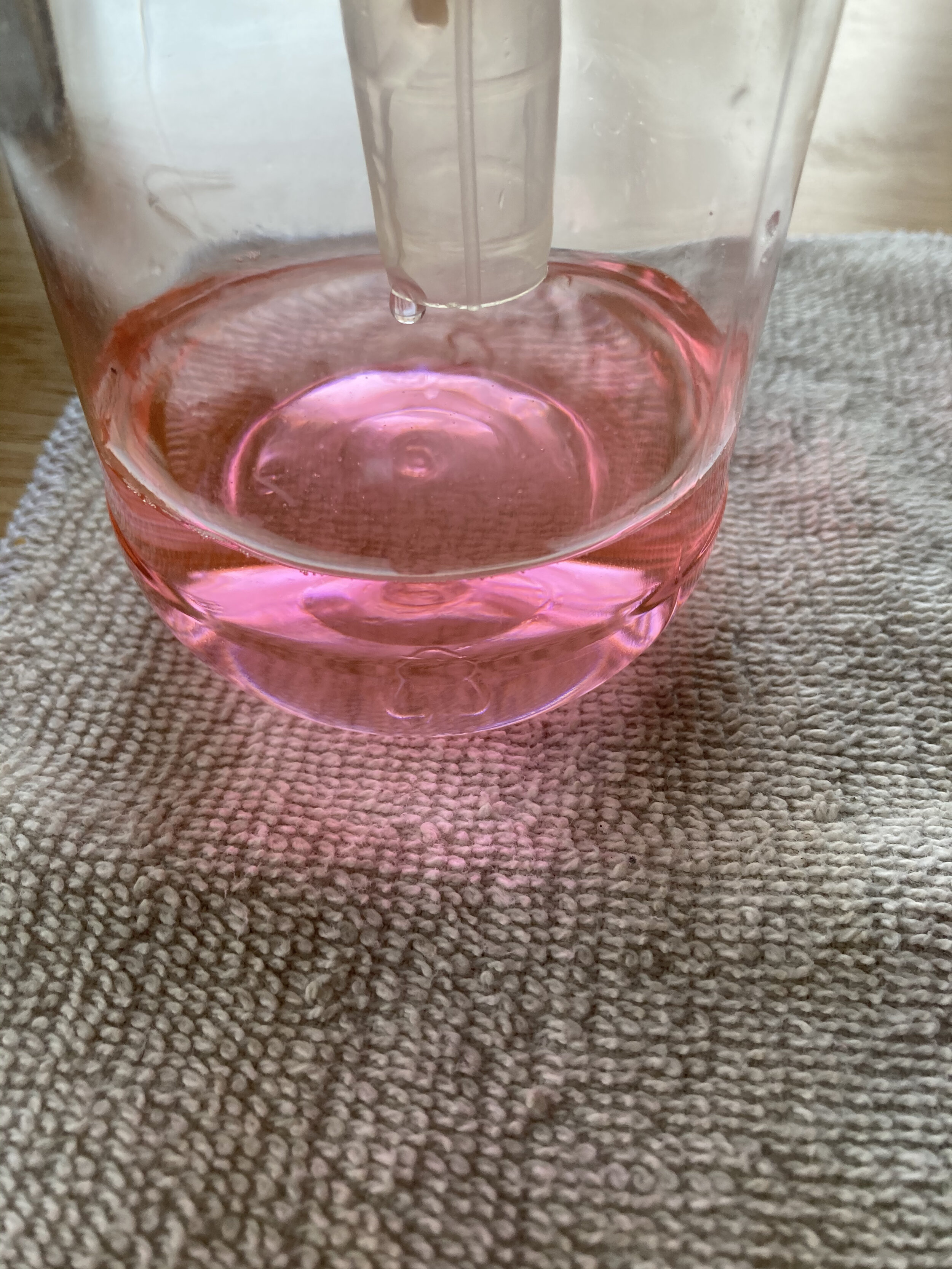
Pigment slurry
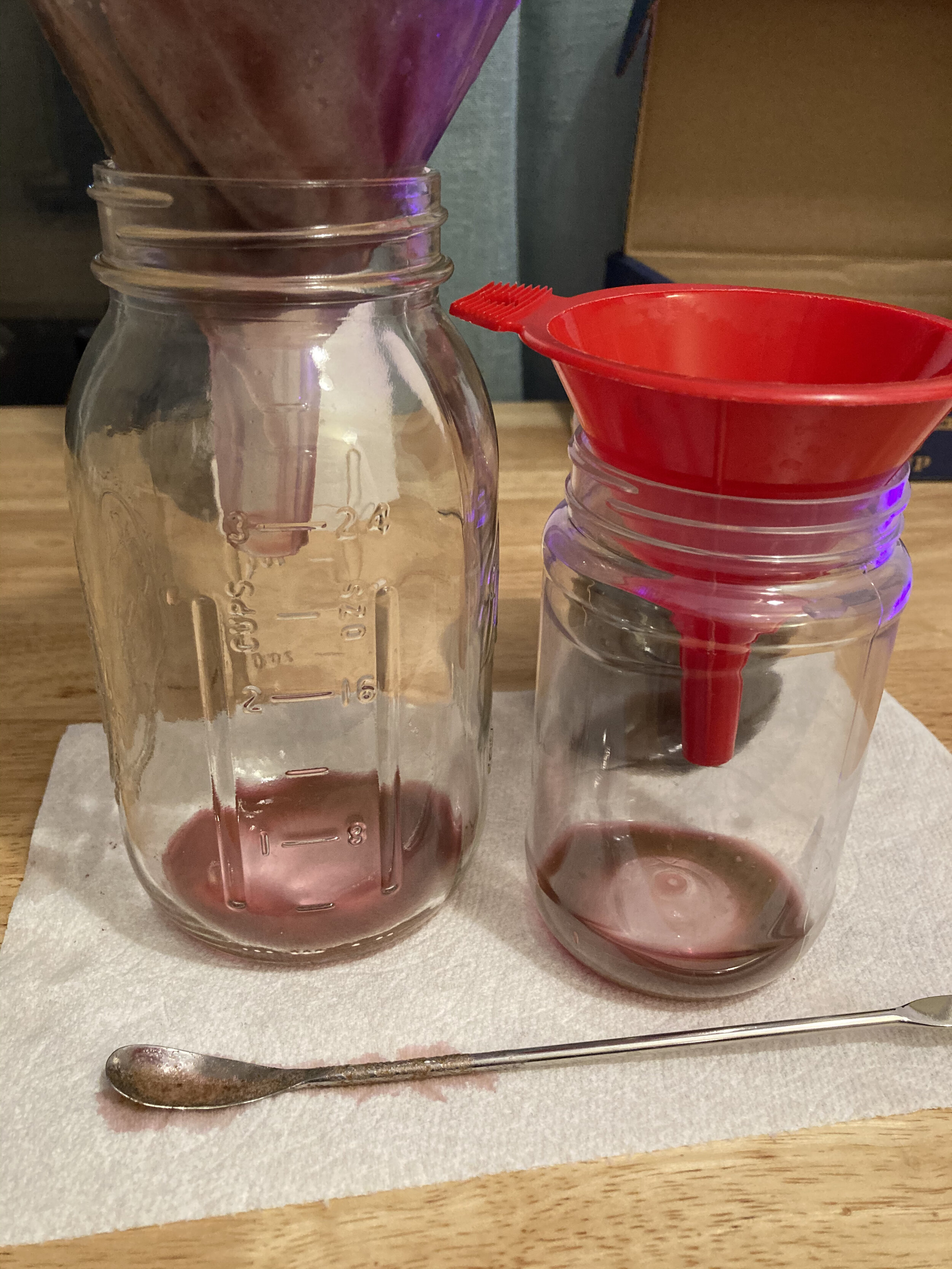
Filtering the concentrate after "salting out" the pigment
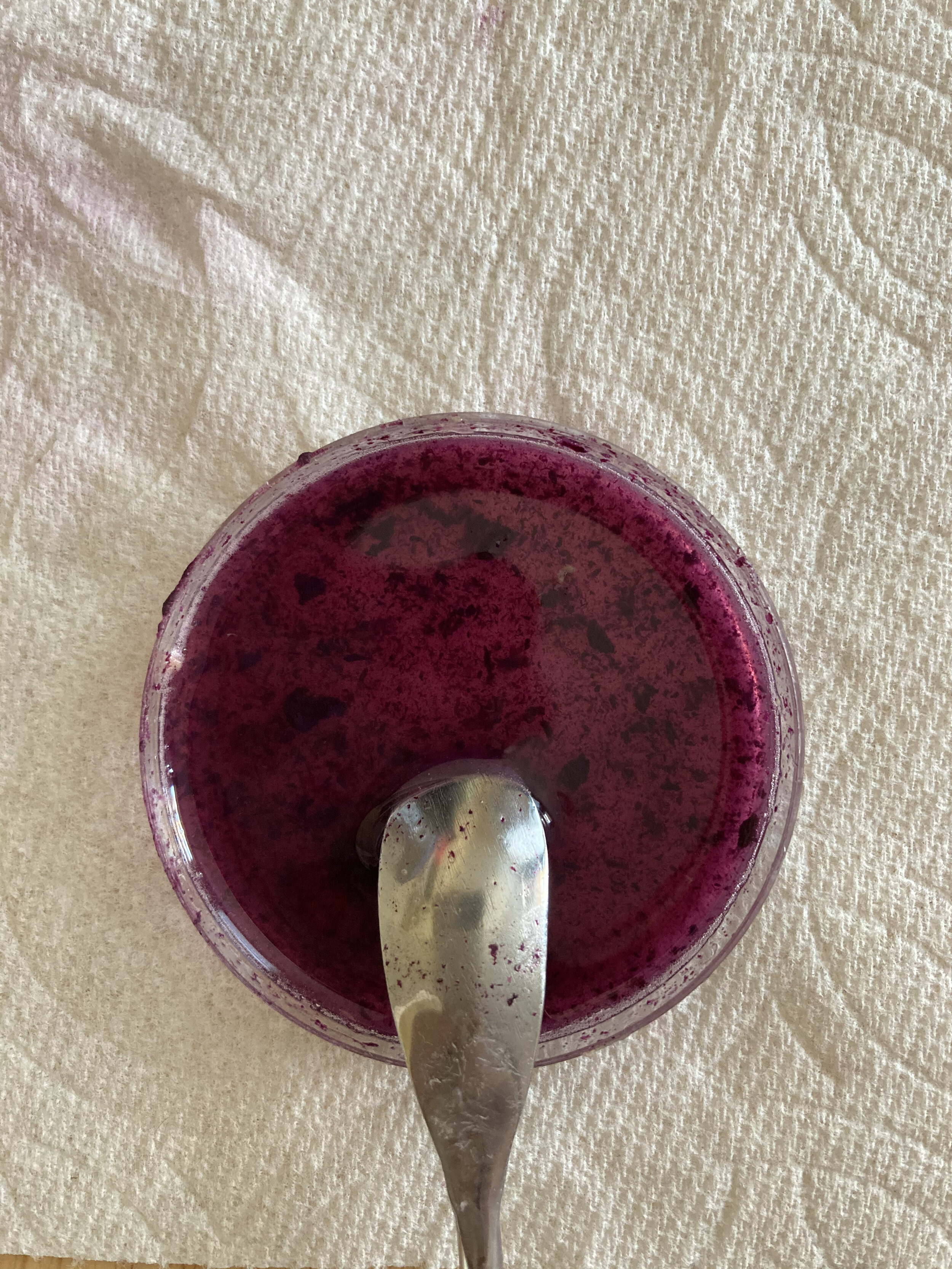
Final pigment extraction
Color Experiments
The resulting pigment extraction was quite crude and contained a high level of salts. After mixing the pigment with the watercolor base, it remained fairly separated and gelatinous, probably due to the high carrageenan levels in the seaweed. This was a difficult paint mixture!
I added gouache to this final materials test for several reasons. Other materials observations showed very poor lightfastness and severe fading due to sun exposure. This mixture was also very translucent and did not flow well, so some traditional materials helped its workability greatly.
I learned a lot from the process and look forward to future experiments!
Algae color wheel, with Mazzaella splendens extracted pigment on the far left


